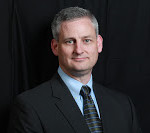 Now that Summer is winding down, SC15 is just around the corner. With a smaller exhibits space than previous years, the SC15 Exhibits Chair Trey Breckenridge was faced with a number of challenges going into this year’s Supercomputing conference. In this interview from the SC15 Blog, Breckenridge gives us a preview of what looks to be another great exhibition.
Now that Summer is winding down, SC15 is just around the corner. With a smaller exhibits space than previous years, the SC15 Exhibits Chair Trey Breckenridge was faced with a number of challenges going into this year’s Supercomputing conference. In this interview from the SC15 Blog, Breckenridge gives us a preview of what looks to be another great exhibition.
SC15: How many exhibitors this year/or total # of exhibit space?
Trey Breckenridge: We are expecting another sold-out Exhibition this year as we are running ahead in terms of booth space served by the industry and we are tracking ahead in terms of quantity of companies participating. We are expecting approximately 350 exhibiting organizations. The only reason we won’t set a record is because we simply won’t have any physical space left.
The Exhibition will feature leading companies from at least 25 countries and 60 first-time exhibitors.
SC15: How does this compare to previous SC’s at this point in the calendar year?
Trey Breckenridge: We are tracking ahead in nearly every category as compared to any previous year. What this means is the attendee will see a full breadth of the industry represented in the Exhibition. Nowhere else will they find the industry’s leading companies demonstrating the latest innovations in HPC, networking, storage, and related areas. No other event provides such extensive, targeted opportunities for in-depth interaction with the leading companies in the field.
SC15: What is the country breakdown and how many are first-time exhibitors?
Trey Breckenridge: The Exhibition is truly global as we have exhibiting organizations from 25 countries with more than one-third being located outside the United States. We are also seeing new companies being represented and we are expecting 60 or more to make their debut at SC15.
SC15: What type of synergy is there between the Research exhibitors and the Industry exhibitors?
Trey Breckenridge: The SC exhibit floor balances corporate exhibits with a showcase for innovative applications of high performance computing, networking, and storage from research institutions – universities, national laboratories, and nonprofit research centers. These scientists and engineers display the latest advances in computational modeling, imaging, visual analysis, and data technologies, often partnering with industry exhibitors to showcase how particular products can achieve new research discoveries.
Breckenridge suggests building a strategy for maximizing time on the exhibit floor.
SC15: Any tips on how to best plan your time on the exhibit floor?
Trey Breckenridge: Know which booths you want to visit in advance by reviewing the online exhibitor list. Which vendors will help you the most? Where are they located on the exhibit floor? Review the list of presenters at the Exhibitor Forum. If possible, set up advance appointments to meet some of the exhibitors. You may also want to determine a logical route of getting around the Exhibition.
SC15: Austin is considered by many as one of the United States’ technology hubs. Why is Austin such a great SC location?
Trey Breckenridge: Austin is also known as the “Silicon Hills” of the United States and is home to a diverse group of technology companies as well as some leading academic institutions. Plus, its eclectic blend of culture, music, and beautiful geography further add to its attraction. And, it is a very welcoming city and they highly value our exhibitors and our attendees.
SC15: How did you get started as a volunteer with SC?
Trey Breckenridge: My first exposure to SC was in 1995 as an exhibitor. At that conference, I provided technical support for the Mississippi State University booth as well as for MSU’s participation in the SC’95 Global Information Infrastructure (GII) testbed where we showcased an interactive, 3-D scientific visualization and virtual reality capability utilizing an experimental, high-performance wide-area network. That effort provided me with an opportunity to work with numerous SC volunteers in Exhibits, SCinet, and the Technical Program.
The experience had an incredibly positive impact on me, both professionally and personally, and set into motion a strong desire to be more involved with the conference. In 2006 I was given an opportunity to participate as a committee volunteer and I’ve continued to volunteer since then.
SC15: What past positions have you held and what keeps you coming back as a volunteer?
Trey Breckenridge: In 2006, I began my committee involvement as a member of the security team within the Infrastructure group. Since then I’ve held the positions of Security Chair, Space Chair, Deputy Infrastructure Chair, Infrastructure Co-chair, SCinet Chair, Executive Director to the General Chair, and of course, this year I am the Exhibits Chair.
I’ve thoroughly enjoyed the work and challenges associated with each of these roles, and my involvement with SC has allowed me to meet and work with a lot of great people from the supercomputing community – many of which I now consider to be personal friends. But what brings me back as a volunteer year-after-year is the reward of seeing the result of the hard work from the volunteers and the success of each SC conference.
SC15: Given your long successful track record in the industry, what advice do you have for someone who is just starting out?
Trey Breckenridge: You should not start off with a narrow focus; be as broad as you can and explore complementary areas. With the rapid integration of complex technologies, the additional knowledge gained by understanding those complementary areas will be a huge advantage down the road. I would also suggest finding a mentor who you can emulate and learn from – the SC Mentor-Protégé Program is a good place to start. I’ve had three in my professional career and owe any success that I’ve had to them.




